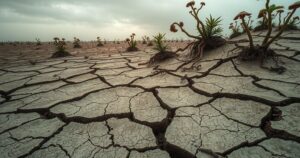Iran Protests: Nationwide Demonstrations and Economic Hardship Intensify on March 9, 2025

On March 9, 2025, protests erupted across Iran due to increasing public discontent over government corruption and economic hardship. Various sectors, including truck drivers, retirees, and healthcare workers, voiced their grievances, demanding systemic change. Despite the government’s crackdown, widespread protests reflect a significant shift in societal attitudes against the clerical regime.
On March 9, 2025, widespread protests erupted across Iran, driven by public dissent against governmental corruption, economic mismanagement, and oppressive policies. Individuals from various occupations, including truck drivers, retirees, nurses, and oil workers, expressed their grievances against the clerical regime’s failure to address their pressing demands. Protests extended from Tehran to regions such as Ahvaz, Yazd, and Mashhad, highlighting the collective anger of different societal sectors.
In Tehran, truck drivers near the Turkish border protested against issues in the transportation and mining sectors, demanding the return of unlawfully seized trucks. University staff rallied for an unjust minister’s resignation. Elsewhere, in Ahvaz and Shush, retirees protested against low pensions, while nurses in Yazd sought improvement in wages and working conditions. Contract oil workers in the Bibi Hakimeh Oil Field also protested wage issues and conditions they deemed unacceptable.
Despite harsh weather, retirees in Kermanshah protested against economic hardship, invoking slogans that condemned corruption and demanded freedom. In remote Shahroud, coal mine retirees joined the call for better pensions while workers from Arkan-e Sales in Gachsaran voiced anger over unmet work promises. Simultaneously, protests against the detention of young activists occurred in Zahedan, with security forces responding violently, increasing the number of political prisoners.
The government’s crackdown on protesters intensified, exemplified by the tragic death of activist Aboul Kourkour in Izeh. As authorities suppressed dissent, the economic crisis continued to deepen. Acknowledging this, economist Mohsen Bagheri pointed out the disparity between state revenues in U.S. dollars versus the devalued payment received by Iranian workers, severely impacting their living standards.
Reports from various sources indicated a significant economic decline, with excessive inflation and unemployment causing public despair. The situation was exemplified by rising numbers of street vendors and rampant poverty as businesses faced closure due to low customer turnout. The combination of sanctions and poor governmental negotiations raised fears of impending economic collapse.
In the face of escalating protests, the clerical regime appears to be losing its grip over the Iranian populace. The ongoing demonstrations signify a larger movement for systemic change, reflecting widespread discontent with the administration’s handling of corruption, violence, and the deteriorating economy.
The nationwide protests in Iran on March 9, 2025, encapsulate a significant public outcry against government corruption and economic decline. As various sectors united in their demands for better living conditions and reform, the regime’s intensified crackdowns indicate a deepening crisis of legitimacy. The situation reveals systemic issues that, if unaddressed, may lead to increased unrest and a call for significant political transformations in Iran.
Original Source: www.ncr-iran.org







